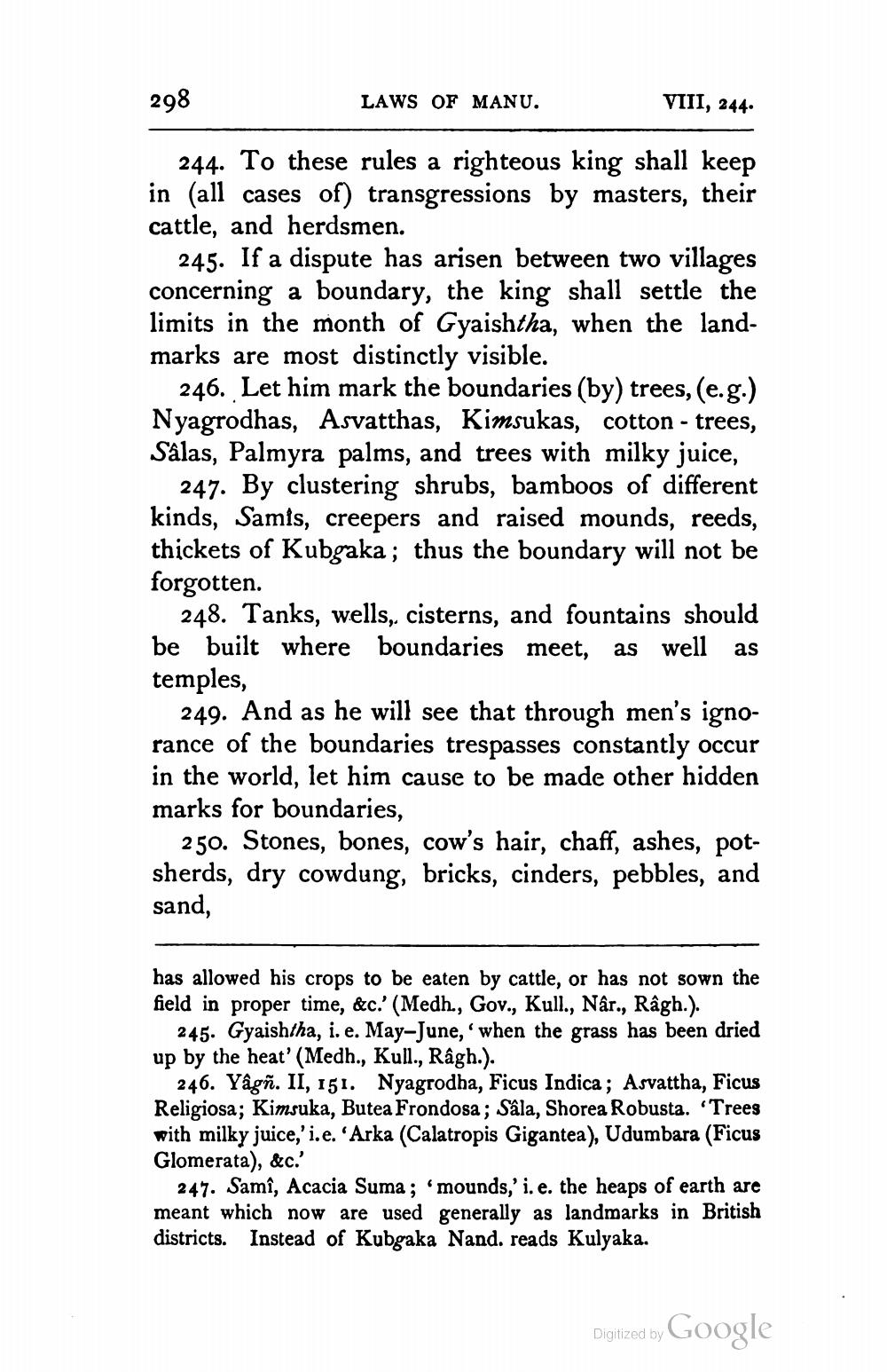________________
298
LAWS OF MANU.
VIII, 244.
244. To these rules a righteous king shall keep in (all cases of) transgressions by masters, their cattle, and herdsmen.
245. If a dispute has arisen between two villages concerning a boundary, the king shall settle the limits in the month of Gyaishtha, when the landmarks are most distinctly visible.
246. Let him mark the boundaries (by) trees, (e.g.) Nyagrodhas, Asvatthas, Kimsukas, cotton - trees, Sâlas, Palmyra palms, and trees with milky juice,
247. By clustering shrubs, bamboos of different kinds, Samis, creepers and raised mounds, reeds, thickets of Kubgaka; thus the boundary will not be forgotten.
248. Tanks, wells, cisterns, and fountains should be built where boundaries meet, as well as temples,
249. And as he will see that through men's ignorance of the boundaries trespasses constantly occur in the world, let him cause to be made other hidden marks for boundaries,
250. Stones, bones, cow's hair, chaff, ashes, potsherds, dry cowdung, bricks, cinders, pebbles, and sand,
has allowed his crops to be eaten by cattle, or has not sown the field in proper time, &c.' (Medh., Gov., Kull., Nár., Râgh.).
245. Gyaishtha, i.e. May-June,' when the grass has been dried up by the heat' (Medh., Kull., Râgh.).
246. Yâgñ. II, 151. Nyagrodha, Ficus Indica; Asvattha, Ficus Religiosa; Kimsuka, Butea Frondosa ; Sâla, Shorea Robusta. 'Trees with milky juice,'i.e. 'Arka (Calatropis Gigantea), Udumbara (Ficus Glomerata), &c.
247. Samî, Acacia Suma; 'mounds,' i.e. the heaps of earth are meant which now are used generally as landmarks in British districts. Instead of Kubgaka Nand. reads Kulyaka.
Digitized by
Digitized by Google




